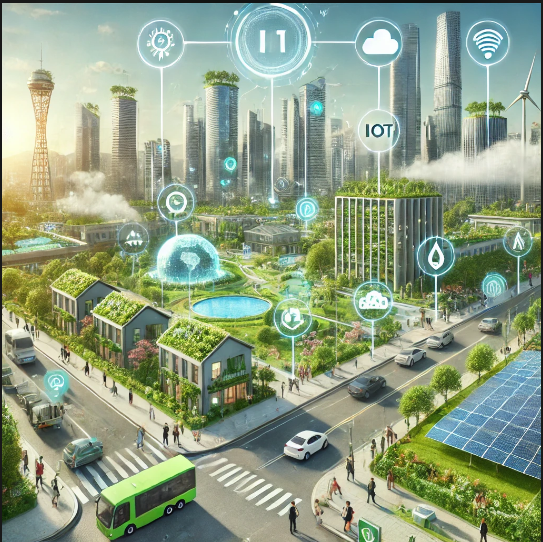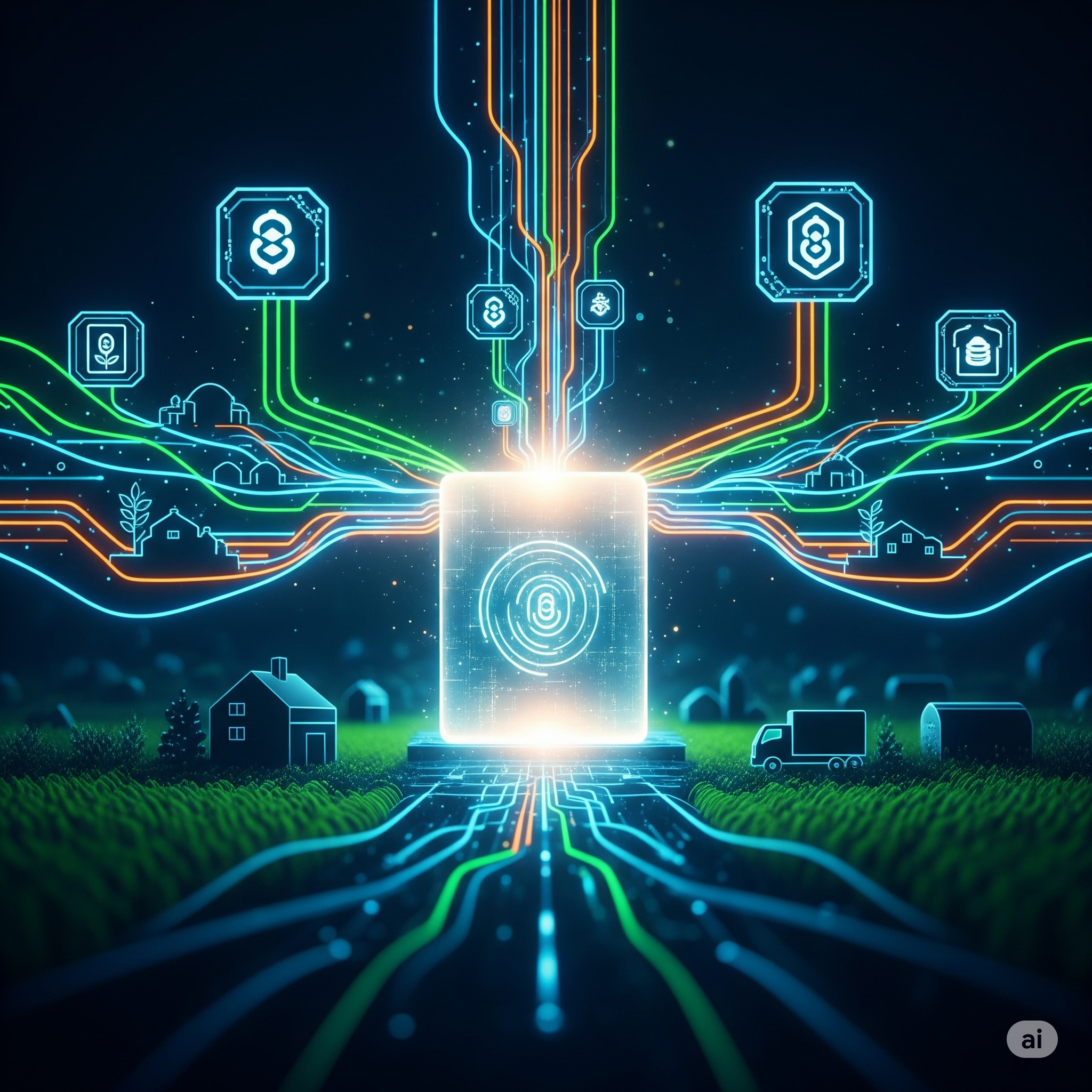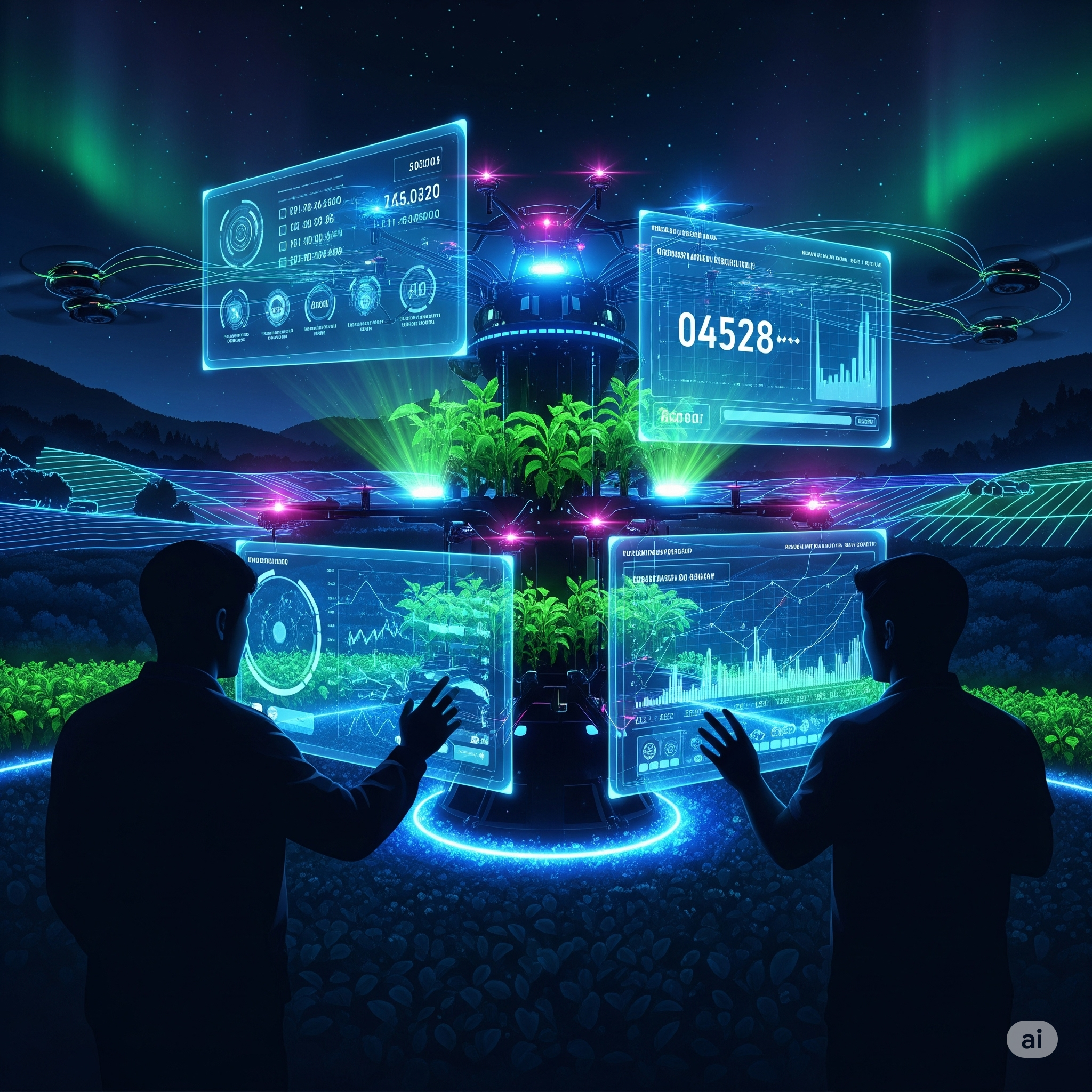Introduction
Sustainable development has become a global priority as nations strive to balance economic growth, environmental protection, and social well-being. With rising concerns over climate change, resource depletion, and pollution, innovative solutions are needed to ensure a sustainable future. Smart technologies, including Artificial Intelligence (AI), the Internet of Things (IoT), blockchain, and renewable energy systems, play a crucial role in driving sustainable development by improving efficiency, reducing waste, and promoting environmentally friendly practices.
This article explores how smart technologies are shaping sustainable development, highlighting key innovations and their impact on various sectors, including energy, transportation, agriculture, and urban planning.
1. Understanding Sustainable Development
The concept of sustainable development was first defined by the Brundtland Commission (1987) as “development that meets the needs of the present without compromising the ability of future generations to meet their own needs.”
1.1. Three Pillars of Sustainability
Sustainable development is built upon three key pillars:
- Environmental Sustainability – Protecting ecosystems, reducing pollution, and promoting renewable energy.
- Economic Sustainability – Ensuring long-term economic growth without harming natural resources.
- Social Sustainability – Improving quality of life, ensuring access to resources, and promoting social equity.
Smart technologies support all three pillars by fostering energy efficiency, reducing environmental impact, and enabling smarter decision-making.
2. The Role of Smart Technologies in Sustainable Development
2.1. Smart Energy Systems and Renewable Technologies
Transitioning to clean and renewable energy sources is a key goal of sustainable development. Smart technologies improve energy efficiency and optimize resource utilization in the following ways:
- Smart Grids – IoT-enabled smart grids enhance energy distribution, reduce energy loss, and integrate renewable sources like solar and wind power.
- AI-Powered Energy Management – AI algorithms predict energy demand, optimize electricity usage, and prevent energy wastage in homes and industries.
- Blockchain in Energy Trading – Decentralized blockchain networks enable peer-to-peer energy trading, allowing consumers to sell excess solar energy to the grid.
2.2. Smart Transportation and Green Mobility
The transportation sector is one of the largest contributors to greenhouse gas emissions. Smart technologies are transforming mobility by promoting eco-friendly transportation solutions:
- Electric Vehicles (EVs) and Smart Charging – AI-powered smart grids ensure efficient EV charging, reducing the strain on power systems.
- IoT-Based Traffic Management – Smart traffic systems use sensors and AI to optimize traffic flow, reducing congestion and emissions.
- Autonomous and Shared Mobility – Self-driving electric vehicles and smart ride-sharing services minimize energy consumption and improve efficiency.
2.3. Sustainable Agriculture Through Precision Farming
Agriculture must become more efficient and environmentally friendly to feed the growing global population. Smart farming technologies help reduce waste, conserve water, and improve productivity:
- IoT-Enabled Smart Irrigation – Sensors monitor soil moisture levels and optimize water usage, preventing over-irrigation.
- AI-Powered Crop Monitoring – AI algorithms analyze satellite images and drone data to detect crop diseases and predict yields.
- Blockchain for Supply Chain Transparency – Blockchain ensures traceability in food supply chains, reducing food waste and promoting fair trade.
2.4. Smart Cities for Sustainable Urban Development
Urbanization is increasing rapidly, making sustainable city planning essential. Smart city technologies help reduce resource consumption and improve residents’ quality of life:
- IoT-Based Smart Waste Management – Smart bins with fill-level sensors optimize waste collection and encourage recycling.
- AI-Driven Energy Efficiency – AI controls smart lighting and HVAC systems, reducing energy waste in buildings.
- Green Infrastructure – Sustainable architecture integrates solar panels, vertical gardens, and rainwater harvesting to reduce environmental impact.
2.5. Water Conservation and Smart Water Management
Water scarcity is a growing global issue. Smart technologies enable efficient water management by reducing waste and improving distribution:
- IoT-Enabled Smart Meters – These meters track water consumption in real time, detecting leaks and promoting conservation.
- AI-Powered Water Treatment – AI enhances water purification by optimizing treatment processes and reducing chemical usage.
- Desalination and Water Recycling – Advanced filtration and desalination technologies provide sustainable water solutions.
2.6. AI and Big Data for Environmental Monitoring
Real-time environmental monitoring helps governments and organizations combat pollution and climate change. AI and big data analytics improve decision-making through:
- Air Quality Monitoring – IoT sensors track air pollution levels, enabling targeted action to reduce emissions.
- Climate Prediction Models – AI-powered simulations predict climate trends and natural disasters, aiding disaster preparedness.
- Deforestation and Wildlife Conservation – AI-powered drones and satellite imagery monitor forests and protect biodiversity.
3. Case Studies: Smart Technologies Driving Sustainability
3.1. Singapore’s Smart Nation Initiative
Singapore is a leader in smart city development, integrating technology to enhance sustainability:
- Smart water management reduces wastage and improves efficiency.
- Green building initiatives promote energy-efficient architecture.
- Autonomous electric buses reduce traffic congestion and emissions.
3.2. Google’s AI for Energy Efficiency
Google uses AI to optimize data center cooling, reducing energy consumption by 40%. This demonstrates the potential of AI-driven energy savings in industries.
3.3. Tesla’s Renewable Energy Ecosystem
Tesla’s solar panels, battery storage systems, and electric vehicles form a sustainable energy ecosystem that reduces reliance on fossil fuels.
4. Challenges and Barriers to Smart Technology Adoption
Despite the benefits, several challenges hinder the widespread adoption of smart technologies for sustainability:
- High Initial Costs – Investing in smart infrastructure requires significant capital.
- Data Privacy Concerns – IoT and AI rely on data collection, raising security issues.
- Technological Limitations – Developing nations may lack access to advanced technologies.
- Resistance to Change – Industries and governments may be slow to adopt new technologies.
- Regulatory and Policy Gaps – Inconsistent regulations hinder the development of sustainable solutions.
5. Future Prospects of Smart Technologies in Sustainability
Looking ahead, several emerging trends will shape the future of sustainable development:
- AI-Driven Circular Economy – AI and IoT will enhance waste reduction and resource efficiency.
- 5G and Edge Computing – Faster connectivity will enable real-time monitoring of smart grids and smart cities.
- Advancements in Green Technologies – Innovations in biodegradable materials, carbon capture, and energy storage will drive sustainability.
- Stronger Government Policies – Stricter regulations will encourage businesses to adopt sustainable practices.
By embracing these technologies, the world can move towards a smarter, greener, and more sustainable future.
Conclusion
Smart technologies are transforming the way we approach sustainable development, offering innovative solutions to climate change, resource conservation, and pollution control. From smart grids and AI-driven energy management to IoT-based waste tracking and precision agriculture, these technologies play a crucial role in creating a balance between economic growth and environmental protection.
To achieve true sustainability, governments, businesses, and individuals must work together to accelerate the adoption of smart technologies, ensuring a greener and more resilient future for generations to come.




